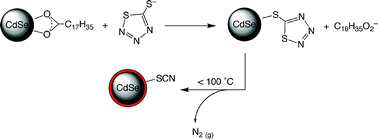This month sees the following articles in Dalton Transactions that are in the top ten most accessed:-
New trends in polyoxometalate photoredox chemistry: From photosensitisation to water oxidation catalysis
Carsten Streb
Dalton Trans., 2012, 41, 1651-1659 DOI: 10.1039/C1DT11220A
The chemistry of organoimido derivatives of polyoxometalates
Jin Zhang , Fengping Xiao , Jian Hao and Yongge Wei
Dalton Trans., 2012, 41, 3599-3615 DOI: 10.1039/C2DT11948J
Coordination chemistry in the solid state
Russell E. Morris
Dalton Trans., 2012, 41, 3867-3868 DOI: 10.1039/C2DT90039D
Novel inorganic–organic hybrids constructed from multinuclear copper cluster and Keggin polyanions: from 1D wave-like chain to 2D network
Xiuli Wang , Yufei Wang , Guocheng Liu , Aixiang Tian , Juwen Zhang and Hongyan Lin
Dalton Trans., 2011, 40, 9299-9305 DOI: 10.1039/C1DT10776C
Zn(ii) and Cd(ii) coordination polymers assembled by di(1H-imidazol-1-yl)methane and carboxylic acid ligands
Xiao-Feng Zhang , Wei-Chao Song , Qian Yang and Xian-He Bu
Dalton Trans., 2012, 41, 4217-4223 DOI: 10.1039/C2DT11990K
Redox reaction in two-dimensional porous coordination polymers based on ferrocenedicarboxylates
Kenji Hirai , Hiromitsu Uehara , Susumu Kitagawa and Shuhei Furukawa
Dalton Trans., 2012, 41, 3924-3927 DOI: 10.1039/C2DT12304E
Synthesis, structure and magnetic study of a novel mixed-valent CoII 10CoIII 4 shield constructed by mixed pyridine–alcoholate ligands
Yan Peng , Chong-Bin Tian , Hua-Bin Zhang , Zhi-Hua Li , Ping Lin and Shao-Wu Du
Dalton Trans., 2012, 41, 4740-4743 DOI: 10.1039/C2DT12487D
Metal–organic frameworks for the storage and delivery of biologically active hydrogen sulfide
Phoebe K. Allan , Paul S. Wheatley , David Aldous , M. Infas Mohideen , Chiu Tang , Joseph A. Hriljac , Ian L. Megson , Karena W. Chapman , Guy De Weireld , Sebastian Vaesen and Russell E. Morris
Dalton Trans., 2012, 41, 4060-4066 DOI: 10.1039/C2DT12069K
Functional porphyrinic metal–organic frameworks: crystal engineering and applications
Chao Zou and Chuan-De Wu
Dalton Trans., 2012, 41, 3879-3888 DOI: 10.1039/C2DT11989G
MOFs as multifunctional catalysts: One-pot synthesis of menthol from citronellal over a bifunctional MIL-101 catalyst
F. G. Cirujano , F. X. Llabrés i Xamena and A. Corma
Dalton Trans., 2012, 41, 4249-4254 DOI: 10.1039/C2DT12480G
Why not take a look at the articles today and blog your thoughts and comments below.
Fancy submitting an article to Dalton Transactions? Then why not submit to us today or alternatively email us your suggestions.
Comments Off on Top ten most accessed articles in March
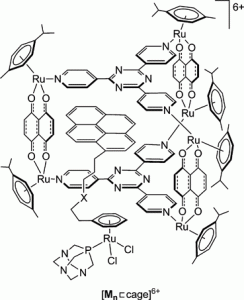 Scientists from Switzerland have developed a cage-encapsulated ruthenium complex for killing cancer cells.
Scientists from Switzerland have developed a cage-encapsulated ruthenium complex for killing cancer cells.










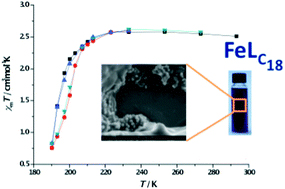
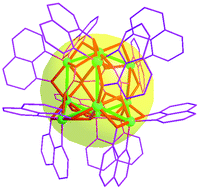
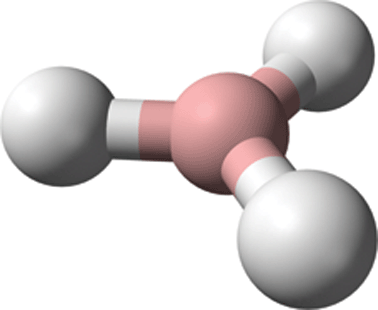

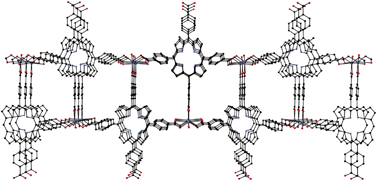
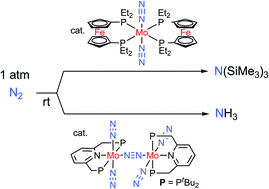
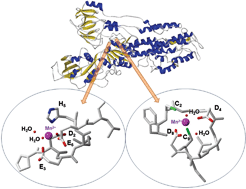 In this HOT article, Zoroddu and coworkers present NMR (mono- and bi-dimensional) and EPR analysis of Zn and Mn complexation to small fragments of the Park9 gene (a member of the P5-type ATPase family) important in
In this HOT article, Zoroddu and coworkers present NMR (mono- and bi-dimensional) and EPR analysis of Zn and Mn complexation to small fragments of the Park9 gene (a member of the P5-type ATPase family) important in 